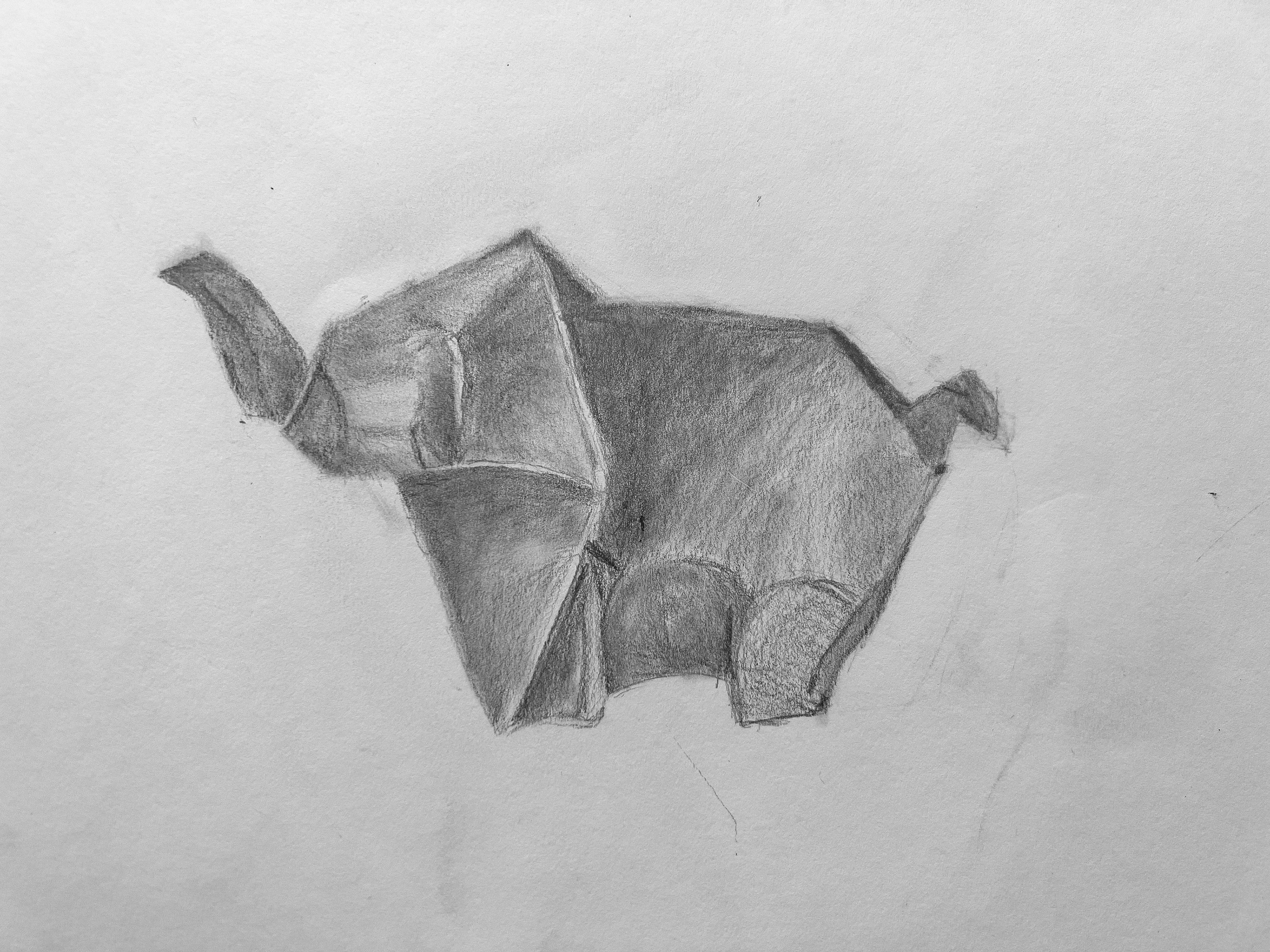Learning Objectives:
• Learn how to create smooth and gradual variations of tone when shading
• Learn how to use tonal gradients in a drawing to make an object appear three-dimensional
• Learn how to neaten and refine work as it progresses
• Learn how to use tonal gradients in a drawing to make an object appear three-dimensional
• Learn how to neaten and refine work as it progresses
What you will need:
• Sketching paper (or your sketchbook)
• Drawing pencils
• Eraser
• Pencil sharpener
• Blending stump (optional)
• Drawing pencils
• Eraser
• Pencil sharpener
• Blending stump (optional)
Demo:
Your Task (Part 1):
1. Choose one of the origami drawings below to draw in your sketchbook
2. Start by drawing the outlines as lightly as you can
3. Add tonal gradients, looking very closely at the original image so you can make your drawing look the same
4. Use your eraser to lighten your shading if necessary
5. Review and refine your work as it develops
2. Start by drawing the outlines as lightly as you can
3. Add tonal gradients, looking very closely at the original image so you can make your drawing look the same
4. Use your eraser to lighten your shading if necessary
5. Review and refine your work as it develops
Choose an image:



Extension task:
If you are looking for a challenge, have a go at drawing this image instead. It is more difficult because many of the variations in tone are more subtle and you have to pay close attention to the direction and width of the shadows and highlights.
Try to fill as much of the page in your sketchbook as you can.
Your Task (Part 2):
Once you have mastered shading linear gradients, have a go at creating a spherical gradient. The video below shows you how.
Top Tips
• Keep your pencil sharp and hold it at a shallow angle when shading
• Try not to apply too much pressure with your pencil when drawing the outlines
• Layer up your shading gradually, starting with the lightest tones
• Smudge your shading between layers, but be careful not to smudge out of the area you are working on
• Don't smudge so much that the shadows and highlights become a similar shade of grey
• Rest your wrist on a piece of scrap paper to prevent unwanted smudging
• Try not to apply too much pressure with your pencil when drawing the outlines
• Layer up your shading gradually, starting with the lightest tones
• Smudge your shading between layers, but be careful not to smudge out of the area you are working on
• Don't smudge so much that the shadows and highlights become a similar shade of grey
• Rest your wrist on a piece of scrap paper to prevent unwanted smudging
Examples of previous students' drawings:
What do you think they did well and what might they have improved on?










